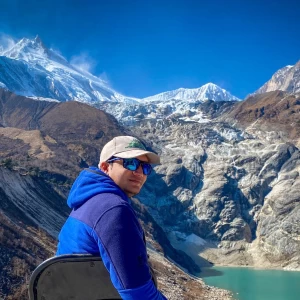The Annapurna region trekking trail is one of the diversified regions in Nepal. Over 10+ trekking trails in the Annapurna mountain range offer excessive experience.
Trekking In Annapurna Region: Best 7 Treks In The Annapurna
Table of Contents
Trekking in Annapurna region of Nepal can be one of the most rewarding hikes. From the Annapurna circuit, the world’s most famous hike to the underrated trail Nar Phu Valley, Annapurna has everything to offer.
The Annapurna mountain range is renowned for its stunning landscapes and diverse biomes, offering trekkers a unique opportunity to immerse themselves in the lush environment and local culture.
This popular region is famous for its breathtaking scenery, rich cultural experiences, ancient villages, and unrivalled hiking experiences. Also, You can get up to (5416m/17769 ft), Thorong La Pass, one of the highest passes in the world.
Some of the popular trails are; Annapurna Circuit Trek, Annapurna Base Camp Trek, Ghorepani Poon Hill Trek, and Jomsom Muktinath Trek. They are popular due to their difficulties, views, experiences, and cultural interactions.
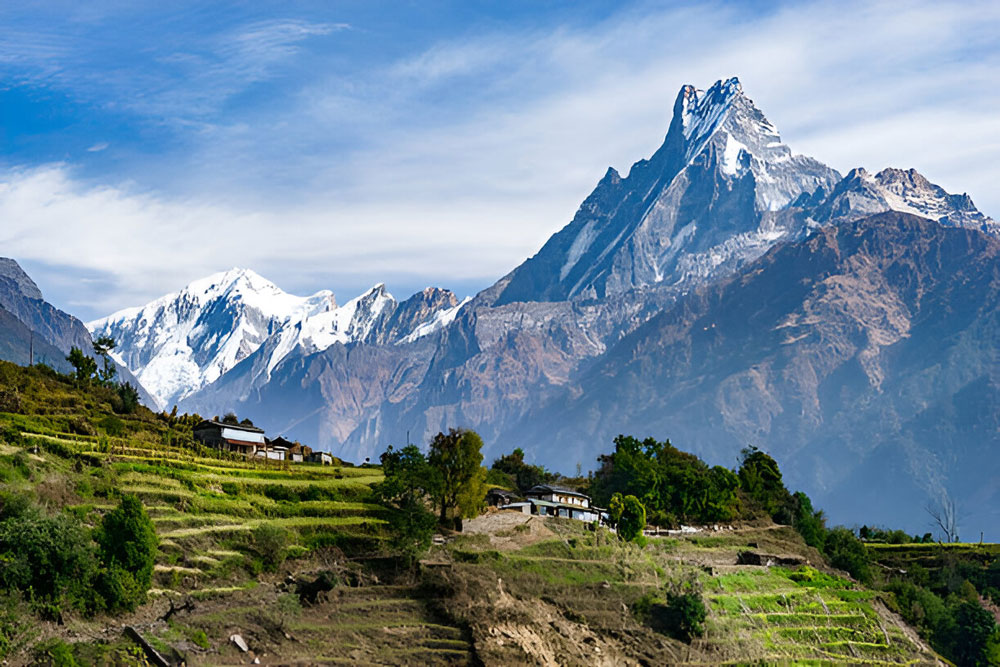
Top Hikes of the Annapurna Region
The Annapurna mountain range is rich in cultural vegetation, religious aspects, and diverse landscapes, making it a lifetime experience. Also, one can experience the majestic Annapurna Range, Dhaulagiri Range, and Mardi Himal.
Any of the treks in the Annapurna region are unique on their own. The reward for each trek differs. So, choose wisely.
Here are the top 7 hikes of the Annapurna region:
Annapurna Circuit Trek
Difficulty: Strenuous
Duration: 11-15 days
Best time: Spring (Pre-Monsoon) – March to May, Autumn (Post-Monsoon) – September to November
Highest point: Thorong La Pass (5,416 metres / 17,769 feet)
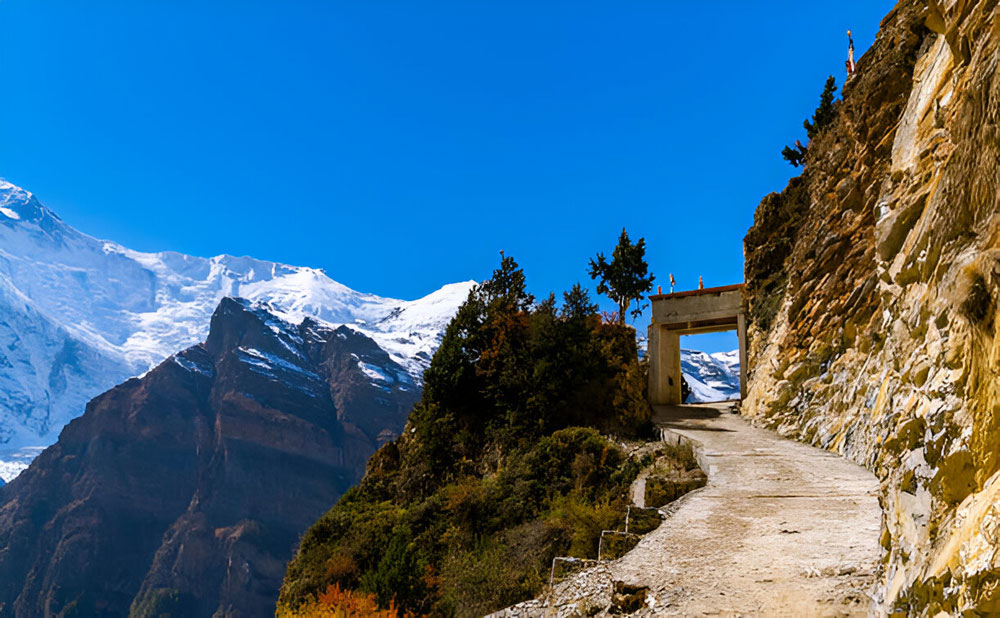
The Annapurna Circuit trek is one of the most famous trails in the Annapurna region. This Annapurna trek used to take around 21 days in total to cover, offering breathtaking views of the Annapurna mountain range. However, with the road being reached and hiking trails being destroyed until Manang Valley, the trail has been shortened to around 11 days.
Nowadays, you will be starting your journey from Jagat. You start the trail way below Manang, especially for Acclimatization purposes.
You will be experiencing a diverse landscape, rich culture, stunning mountain vistas, and natural hot springs.
The stunning beauty of the Annapurna circuit is what attracts most trekkers from around the world. With an amazing view of Annapurna Massif and Dhaulagiri, the Annapurna circuit trekking route is best for mountain scenery, too.
This challenging hike can also be extended for a few days by adding Tilicho Lake.
Tilicho Lake Trek

The Tilicho Lake trek deviates from Manang Valley. It takes around 2 days to reach the lake at one of the highest altitudes ( 4,919 m. | 16,138 ft. ). Previously, Tilicho Lake was one of the highest-altitude freshwater lakes, yet now it has been surpassed by Kajin Sara Lake at ( 5002m | 16411 ft )
You will connect the Annapurna circuit trail again at Yak Kharka or Leddar to continue towards the Thorong La Pass.
Customise your Tilicho Lake Trek
Annapurna Base Camp Trek
Difficulty: Moderate
Duration: 7-12 days
Best time: March to May and September to November
Highest point: Annapurna Base Camp (4,130 meters / 13,550 feet)
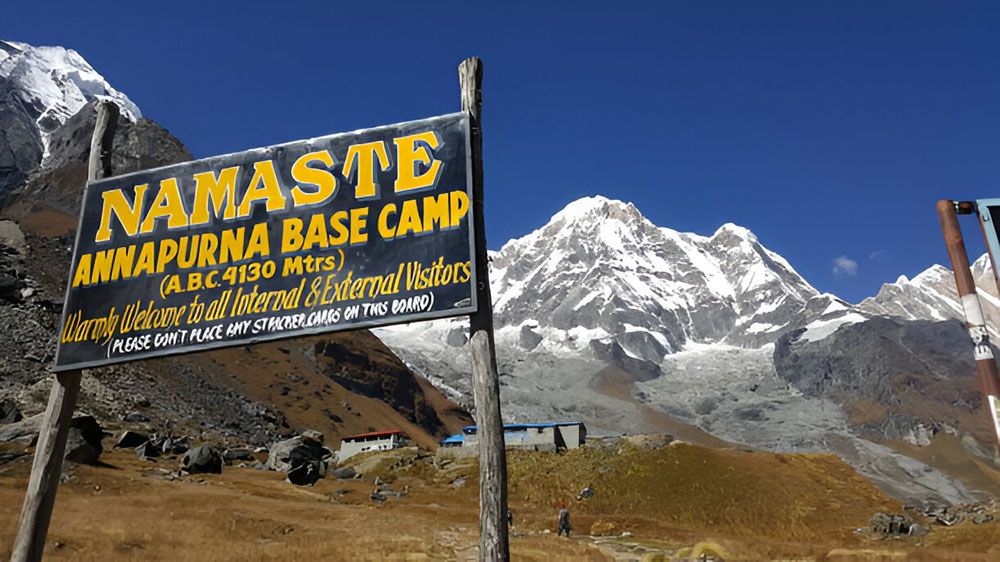
The Annapurna Base Camp trek or Annapurna Sanctuary route begins with a drive from Pokhara, a beautiful city by the lake, to Birethanti or Jhinu. Throughout the journey, the route passes through Gurung and Magar villages such as Ghandruk, Landruk, Chomrong, Tadapani, Dovan, and Ghorepani, offering stunning views of the Annapurna mountain range. These locals often greet visitors with warm smiles, offering a glimpse into their daily activities.
In addition to the charming villages and welcoming locals, trekkers experience majestic peaks like Dhaulagiri, Machhapuchhre, Hiunchuli, and the Annapurna Massif (Annapurna I, II, III, and IV). The trek includes a visit to Annapurna Base Camp as well.
There are two main routes for the Annapurna Sanctuary trek: ABC via Poon Hill and ABC via Jhinu Danda. The ABC via Poon Hill route can be completed in 10-15 days and offers a spectacular 360-degree view of the mighty mountains in the Annapurna sanctuary, including Dhaulagiri I, the 7th highest mountain in the world.
The ABC via Jhinu Danda route can be completed in 5-7 days, allowing trekkers to immerse themselves in beautiful landscapes with green terraced farmlands and enjoy panoramic views of Mt. Annapurna, Mt. Machhapuchhre, Mt. Himchuli, Mt. Dhaulagiri, and Nilgiri.
Mardi Himal Trek
Difficulty: Easy
Duration: 7 days
Best time: March to May and September to November
Highest point: Mardi Himal Base Camp (4,500 meters / 14,763 feet)
 The journey to Mardi Himal Base Camp begins from Kande near Pokhara, offering amazing views of mountains and lush forests. The trek goes through some of the world’s most stunning valleys, offering breathtaking views of the Annapurna mountain range, including Pitamber, Deurali, and Badal Danda ridges, as well as enchanting rhododendron forests.
The journey to Mardi Himal Base Camp begins from Kande near Pokhara, offering amazing views of mountains and lush forests. The trek goes through some of the world’s most stunning valleys, offering breathtaking views of the Annapurna mountain range, including Pitamber, Deurali, and Badal Danda ridges, as well as enchanting rhododendron forests.
This is a new and less crowded trek in the area, making it perfect for beginner trekkers. It’s a longer hike than Poon Hill but offers similar experiences. Along the way, trekkers can enjoy the beautiful landscapes, peaceful trails, and the chance to see the impressive Mardi Himal and other peaks like Machhapuchhre (Fishtail), Annapurna South, and Hiunchuli.
As the trek progresses to Middle Camp (Badal Danda) and High Camp, the views of the surrounding mountains become even more spectacular. The final ascent to Mardi Himal Base Camp is a rewarding experience, with panoramic views of the Himalayan peaks.
This trek provides a great mix of nature, adventure, and cultural experiences.
Ghorepani Poon Hill Trek
Difficulty: Easy
Duration: 3-4 days
Best time: Throughout the year
Highest point: Poon Hill (3,210 meters / 10,531 feet)
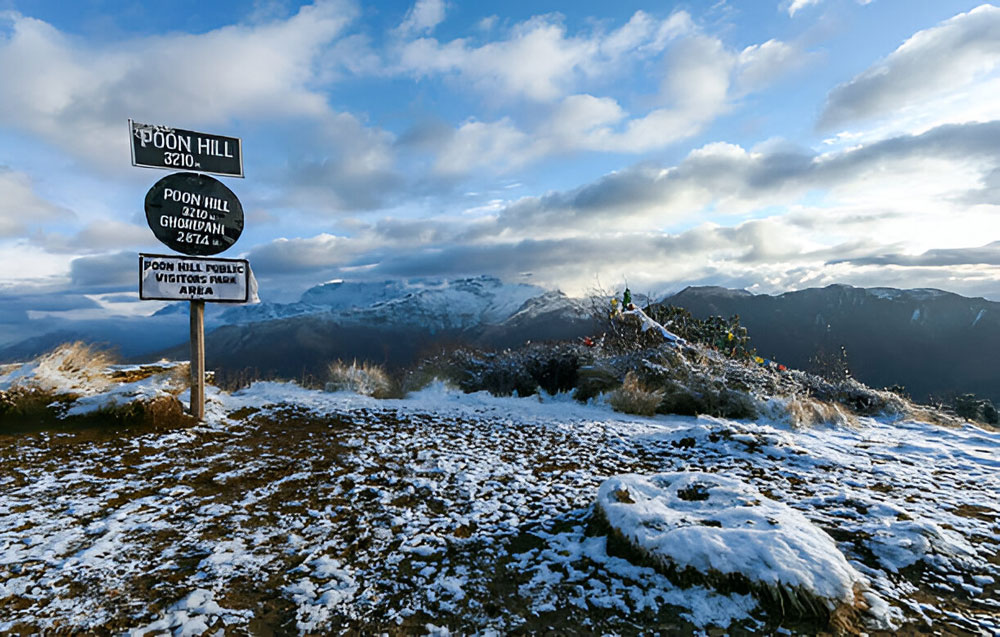
A perfect example of a short and one of the best hikes all over the world is Ghorepani Poon Hill Trekking.
From this walk, you will see picturesque alpine landscapes with big mountains and small villages scattered on the foothills of the Annapurna mountain range.
Ghorepani Poon Hill walk features spectacular views of the Annapurna and Dhaulagiri mountain ranges and the view of sunrise or sunset from this Hill is unrivalled.
It’s an intriguing walk from one ethnic village to another village whose residents are Gurung, Magar, and Chettris. This journey is famous for the view of Sunrise and the Sunset.
When the golden rays strike the snowy villages and peaks, you will witness an unbelievable scene.
Upper Mustang Trek
Difficulty: Moderate to strenuous
Duration: 12-15 days
Best time: April to October
Highest point: Lo Manthang (3,810 metres / 12,500 feet)
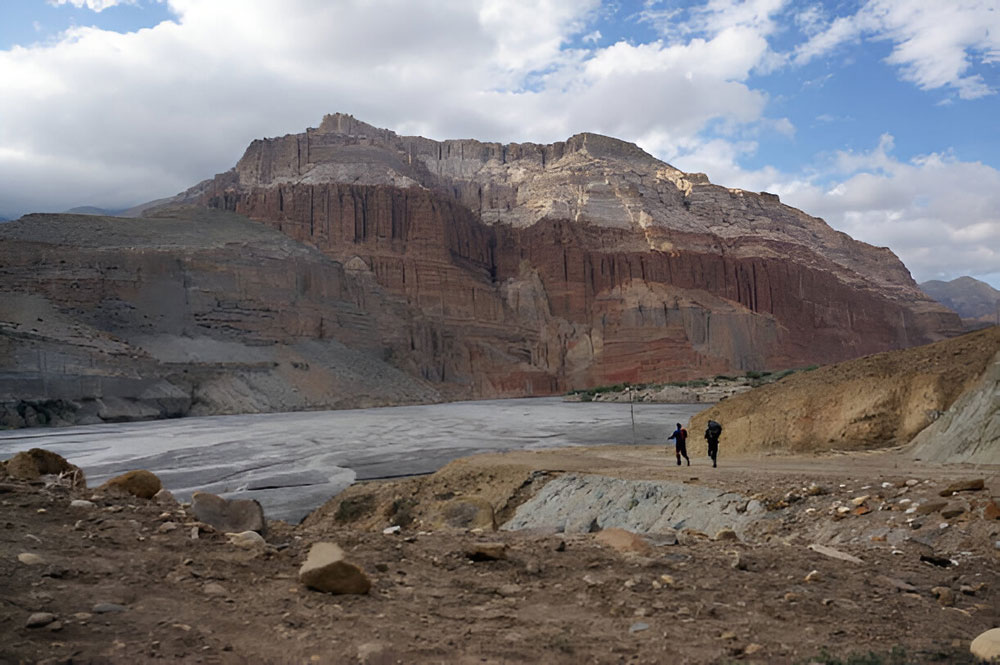
Your adventure for the Upper Mustang Trek starts from Jomsom (all routes). It is because it is located behind the Himalayas and the Annapurna mountain range, which block monsoon rains.
Also, the hike is considered one of the Holy Places for Hindus and Buddhism. The reason for this is that for Hindus, Muktinath Temple is one of the most powerful and holy temples of the Lord Vishnu.
For Buddhism, Upper Mustang is home to many ancient monasteries and temples. Overall, this helps to explore the undisturbed Tibetan Buddhist culture, with ancient monasteries, traditional villages, and sky caves located on the edge of high cliffs.
Also, you will encounter ancient monasteries, Kali Gandaki River valley, caves, Tibetan-influenced villages, ancient Chortens, and red cliffs throughout the trek.
Nar Phu Valley Trek
Difficulty: Moderate to Strenuous
Duration: 15-18 days
Best time: April to October
Highest point: Kang La Pass (5,306 metres / 17,409 feet)
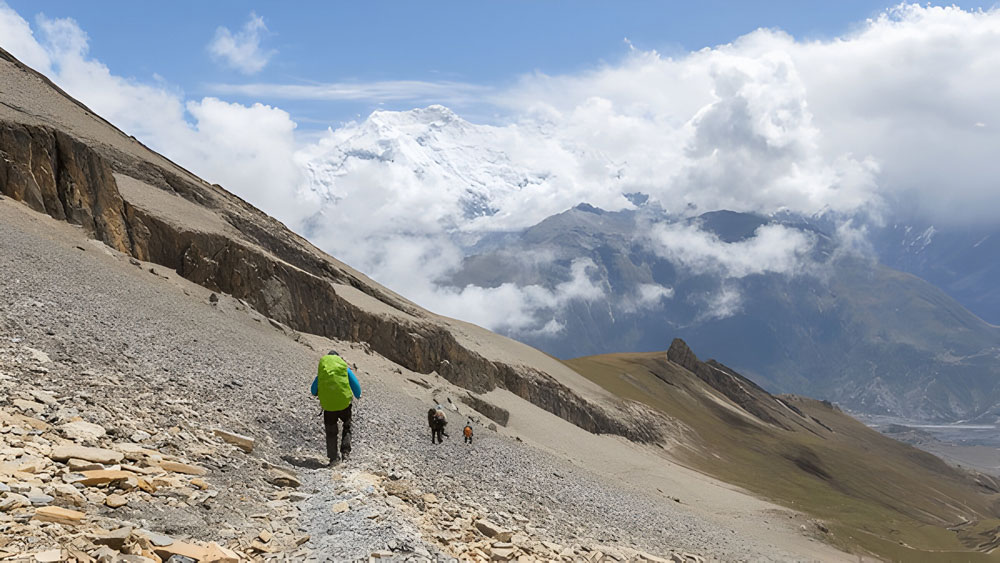
The Nar Phu Valley trek is a mix of raw Himalayan nature and ancient Buddhist culture. Trekkers will see high peaks and passes, glaciers, remote villages, narrow canyons, lovely forests, gompas (Buddhist monasteries), and unique Tibetan cultures.
Starting from the town of Koto, the trail heads into the remote Nar Phu Valley, passing through several small villages. Some key villages include Meta, Nar, and Phu. These villages are rich in traditional Tibetan culture, with prayer flags fluttering in the wind and ancient gompas where monks practice Buddhism.
In Phu village, trekkers can explore the ancient Tashi Lhakhang Gompa, which holds significant religious importance and offers insights into the local Buddhist practices. Nar village, with its narrow streets and traditional stone houses, showcases the unique Tibetan-influenced culture of the region.
The landscape is diverse and breathtaking, with views of high peaks like Annapurna II, Gangapurna, and the Annapurna mountain range. The trek crosses the Kang La Pass (5,322 meters), offering panoramic views of the Annapurna and Dhaulagiri ranges. This high-altitude pass is a challenging yet rewarding part of the trek.
Trekkers will also pass through lush forests of pine and rhododendrons, which turn into barren, rocky landscapes as they go higher. The area is home to rare wildlife and herbs, and it is possible to see animals like snow leopards, Himalayan Tahr, musk deer, and blue sheep.
The journey also provides a chance to observe the local way of life in these remote villages. The trek also includes a visit to the Phu Gate, a traditional entry point to the village, and the Himlung Base Camp, which offers stunning views of Himlung Himal (7,126 meters).
Khopra Ridge Trek
Difficulty: Easy
Duration: 10-14 days
Best time: March to May and September to November
Highest point: Khopra Ridge (3,660 meters / 12,007 feet)
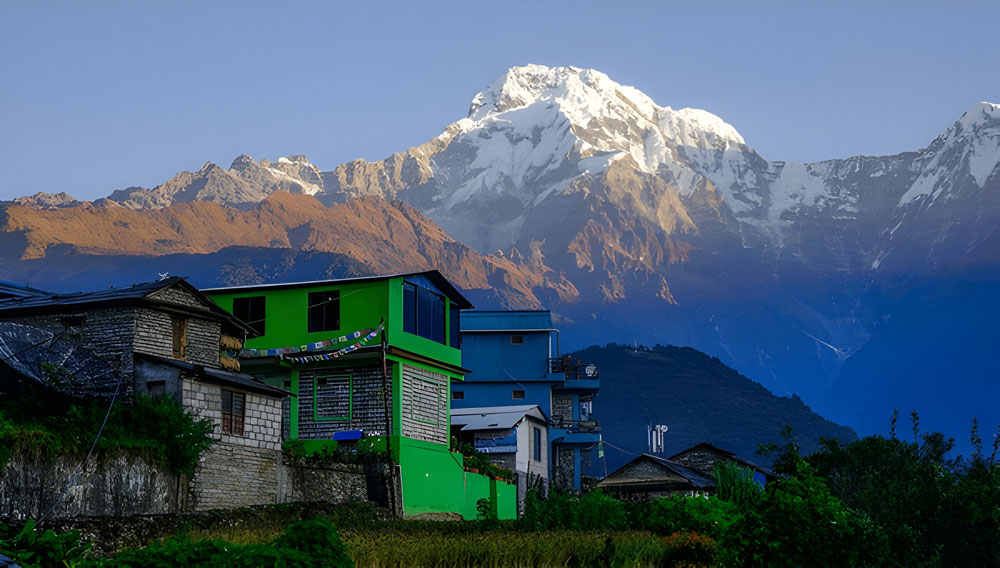
The Khopra Ridge Trek starts in Nayapul, near Pokhara. This trek offers stunning views of the Annapurna mountain range and Dhaulagiri ranges and provides a chance to experience local culture and lifestyle.
This is a newly opened trail in the Annapurna region, making it a perfect alternative to the popular and more crowded Poon Hill Trek. The trek begins with a gentle walk through lush forests and terraced fields, passing through charming villages like Ghandruk, a beautiful Gurung village known for its rich culture and hospitality.
The trail then leads to Tadapani, where trekkers can enjoy panoramic views of the Annapurna South and Machhapuchhre (Fishtail) peaks. From Tadapani, the trek continues to Bayeli Kharka, passing through rhododendron forests that are especially beautiful in the spring when the flowers are in full bloom.
Fun Alert: One interesting activity in the trek is that you can visit the Cheese Factory and buy fresh cheese in Swanta Village.
Permits Required in Annapurna Region
From February 2024, you need two permits, namely the Annapurna Conservation Area Permit (ACAP) and Trekkers Information Management System (TIMS) card for all the trails in the Annapurna Region.
Plus, you need special permits named Restricted Area Permits (RAP) for restricted areas too.
Upper Mustang and Nar Phu Valley are two restricted areas of the Annapurna region. So, Nepal Tourism Board (NTB) has special Restricted Permits for these trails.
For other trails, ACAP and TIMS are enough to trek in the Annapurna region.
What is the Best Time for the Annapurna Region Trek
 The perfect time for the Annapurna region starts in April and lasts till November. The area is also known for monsoon treks. The places that you should go and see once in monsoon are Annapurna Circuit Trek, Nar Phu Valley Trek, Upper Mustang, Ghorepani Poon Hill Trek, and Mardi Himal.
The perfect time for the Annapurna region starts in April and lasts till November. The area is also known for monsoon treks. The places that you should go and see once in monsoon are Annapurna Circuit Trek, Nar Phu Valley Trek, Upper Mustang, Ghorepani Poon Hill Trek, and Mardi Himal.
Spring
Hiking at this particular time offers spectacular views of rhododendron forests, cultural views in Ghandruk and Landruk, and majestic ranges like the Annapurna range and the Dhaulagiri range.
If one visits the Annapurna region in Spring, one will get to see the Nepali New Year and some other local ones.
Due to the clear skies, trekkers will walk in the presence of snow-capped mountains, stunning landscapes, and alpine meadows.
Annapurna Base Camp, Mardi Himal Trekking, and Annapurna Circuit Trek are some of the perfect treks throughout the season.
Summer or Monsoon
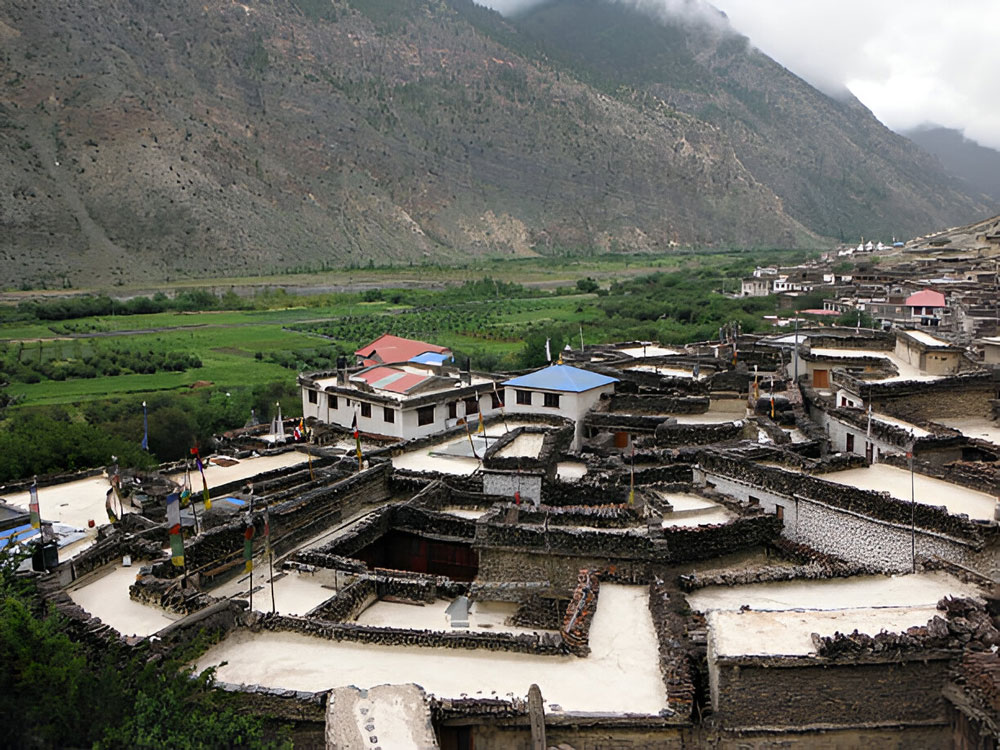
It begins from June to September when heavy rainfall, humidity, and leeches are common. Trekkers do not need to worry about rainfall and leeches because we will be departing after checking the weather.
This season has one great benefit, only a limited number of trekkers walk in this time which makes the hike rich. Also, you can see lush forests, and spectacular waterfalls and rivers.
However, due to excessive rainfall landslides may occur in some places of the region, so you need to be careful. Also, for the leeches or other insects, you may use salt or insect repellent.
Some of the popular treks of this season are Upper Mustang, Nar Phu Valley Trekking, and Ghorepani Poon Hill Trek which is best for the time. Guide and porter are highly recommended at this time for safety instructions,
Autumn
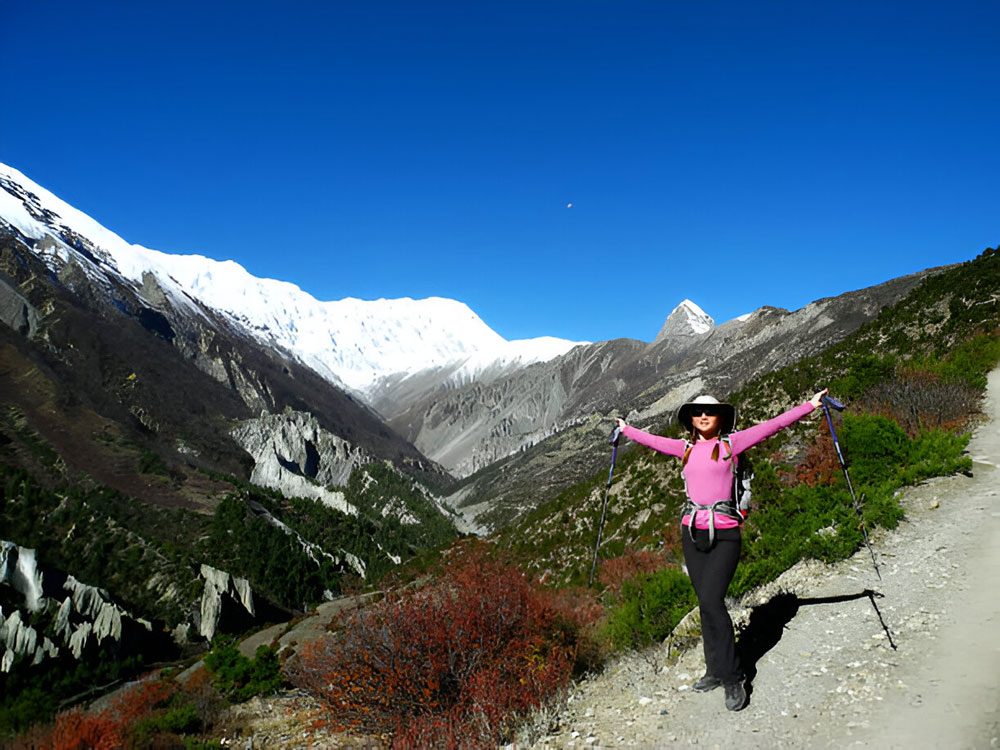
Autumn is the peak season for the Annapurna Region due to the mild and stable temperatures, less rainfall, and clear skies. Also, mountain ranges like Annapurna, Machhapuchre (Fishtail), and Dhaulagiri are the top-rated views in Autumn.
Annapurna Circuit Trek, Annapurna Base Camp Trek, Ghorepani Poon Hill Trek, and Mardi Himal Trek are perfect for this season. You can also observe the major festivals of Nepal like Dashain, Tihar, and Chhath during Autumn.
However, the trials of the region are busy, and finding accommodation is hard due to many trekkers. So, we suggest you book before the walk.
Winter (December to February)

The unique experience of winter offers snow-covered landscapes, clear skies, and less-crowded trials. For the majestic view of mountain vistas, this season is the perfect.
Also, you will be hiking in peace trials and enjoying the best view of the Annapurna Region. A guide and porter are highly recommended because the snow can confuse your navigation and provide essential support in cold weather in higher altitudes.
Annapurna Base Camp or Annapurna Circuit?
This topic is the most controversial one but the answer always depends on your interest. Both Trek offer a different experience in their way.
Annapurna Base Camp is shorter in days in comparison with Annapurna Circuit but the views of both trials are unrivalled. The difficulty of Annapurna Base Camp is moderate whereas the difficulty of Annapurna Circuit is strenuous.
Trekkers can get up to 4,130 meters (13,550 feet), at Annapurna Base Camp through ABC trek. One will accomplish a legendary pass, Thorong La Pass (5,416 meters / 17,769 feet) from Annapurna Circuit.
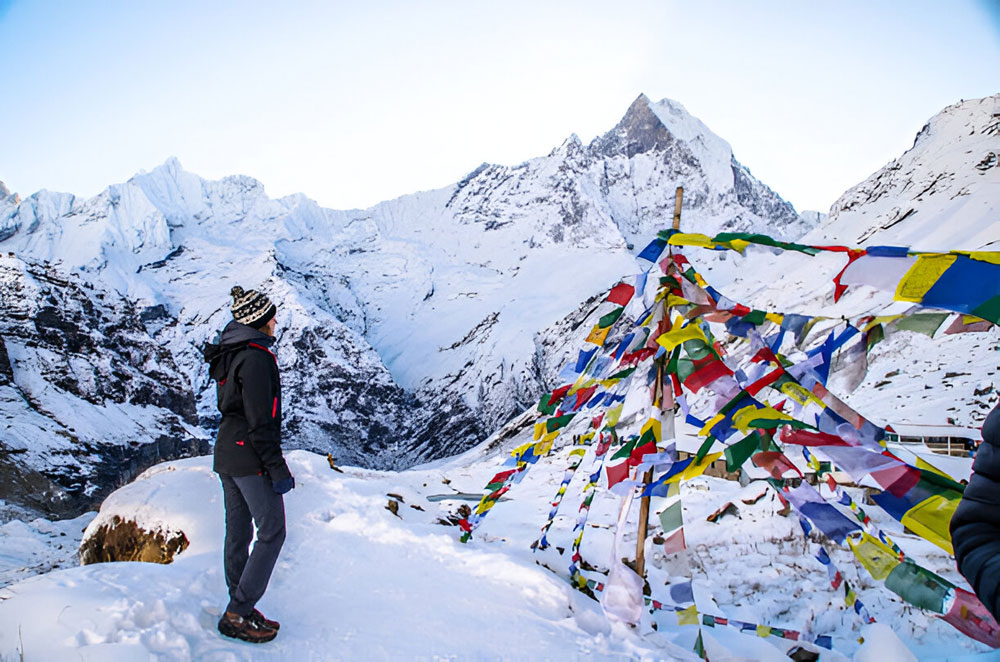
From the Annapurna circuit, You can go to the world's highest-altitude lake, Tilicho Lake at 4,919 meters (16,138 ft).
However Annapurna Base Camp is not the least one, you can get two Base Camps in the Annapurna region ie. Annapurna base Camp (4,130 m. | 13,550 ft. ) and Machhapuchhre (3,700 m. | 12,139 ft. ). Also, one will be able to observe the great Annapurna massifs.
Altogether, the Annapurna circuit trek features diverse experiences of culture and routes but the Annapurna Base Camp offers close views of Annapurna massifs. So, choose the most suitable journey for yourself with us.
Fitness to Trek in the Annapurna Region
Trekking in the Annapurna region requires a certain level of physical fitness. Adventurers need to build up endurance, strength, flexibility, and balance before the hike.
One should be running, doing step-ups, and stretching exercises before 2-3 weeks of the actual hike.
Trials in the area are up to strenuous so, you need to be very careful. Also, the Himalayas can be exciting as well as dangerous.
If one needs to acclimatize in the trek then, always remember "Climb high, Sleep low". This principle says that you should always hike at higher altitudes and sleep in little lower altitudes.
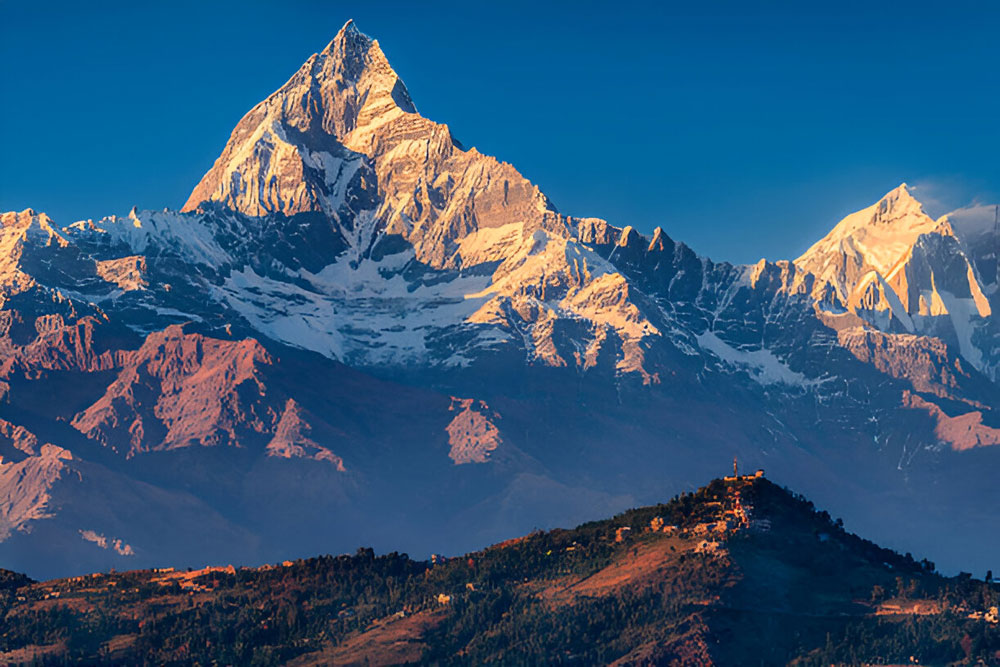
Tips For All Trekkers
Not just Annapurna, but any hiking trail requires you to have some precautions. Here are our tips for all trekkers who are going for their adventure journey around Annapurna:
Throughout the trek, always remember to be hydrated, maintain a rich balanced diet, get good rest in hotels, tea houses, or homestays, and pay attention to your body.
Avoid meat at higher altitudes because the meat at higher altitudes is brought from lower altitudes and has a chance of being infected. This type of food can cause food poisoning or worse.
Also, avoid caffeine and alcohol because it can also drain your energy.
If you have any body pain or have some issues or allergies then better consult with your guide or agency before the trekking.
FAQs
Here are some of the most asked questions from trekkers.
How difficult is Annapurna trek?
The major Annapurna circuit trek is a strenuous trekking expedition. However, if you choose something like the Annapurna Base Camp trek or Ghorepani Poon Hill, they are moderate and easy respectively.
How long does it take to trek Annapurna?
The Annapurna circuit takes around 11 days to complete. The rest trails are around 5-18 days depending on the routes like Sanctuary, Nar Phu, and more.
Is Annapurna trek worth it?
Yes, the Annapurna trek is worth it. You will get views, culture, and amazing hiking experiences without crowds.
How hard is Annapurna Sanctuary trek?
Except for Winter, the Annapurna Sanctuary Trek is considered of moderate difficulty. You walk on average of 10 kilometres everyday, so can be considered a medium hiking trail.

